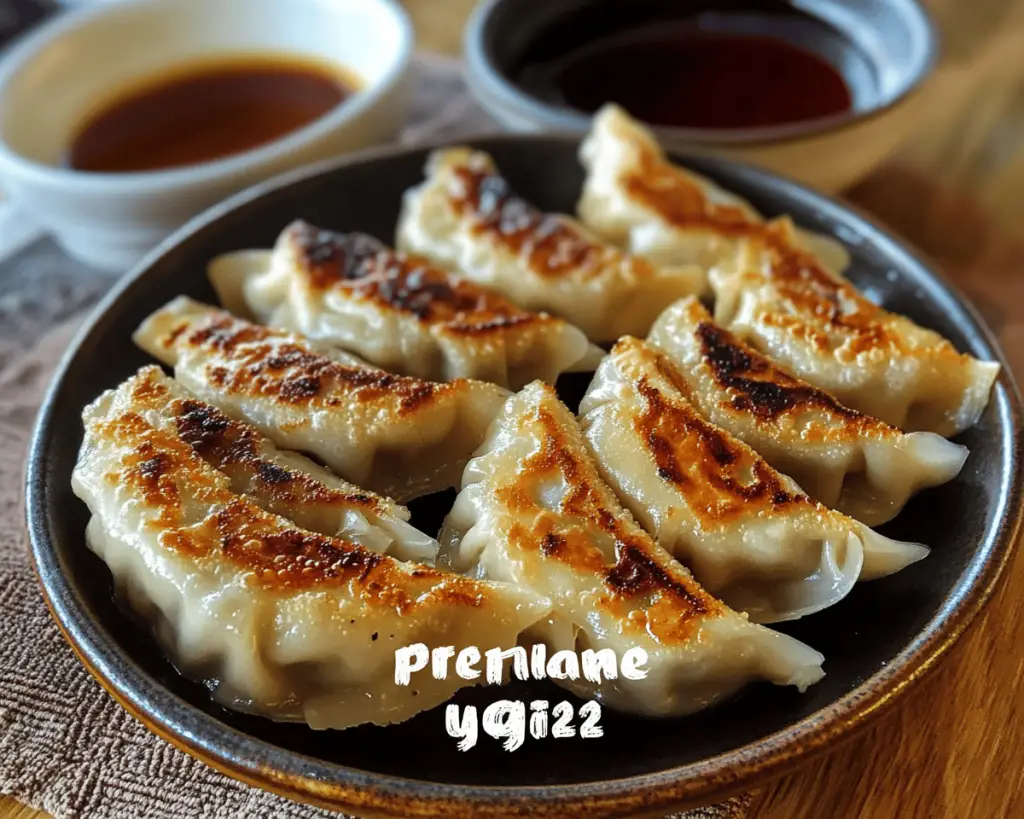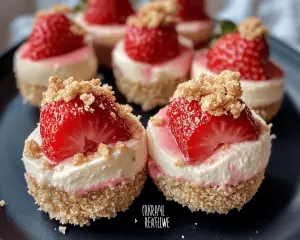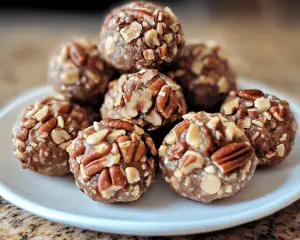I remember the first time I made gyoza. It was a rainy Saturday, and the scent of something delicious was bubbling up from the kitchen like a cozy embrace. My friends had come over for a movie marathon, and I thought, “Why not impress them with something homemade?” Of course, I had never made dumplings before, and the thought of it was somewhat intimidating. You know what I mean? I could almost hear my auntie’s voice cautioning me about the joys and perils of making dough from scratch. But I rolled up my sleeves, threw on a bit of music to lift the mood, and got to work.
Fast forward a few hours, and there I was—nestled on the sofa, gyoza lovingly arranged on a platter, ready to be devoured by my friends. Honestly, gyoza doesn’t just bring people together; it creates a tapestry of memories and flavors that linger long after the last bite. The crunchy bottoms, the soft steamy insides bursting with umami goodness, and the fragrant dipping sauce are nothing short of magic. If you didn’t know already, making gyoza isn’t just cooking—it’s an experience, one that sparks joy in your heart every time you fold those little pockets.
This is my perfect homemade gyoza recipe, a dish infused with love, laughter, and the occasional flub (like that one time I added too much garlic!). Whether you are making them for your next gathering or just a comfort meal at home, I promise you’ll feel like a master chef right after your first bite. And who knows? You might just impress your guests!
Ingredient Highlights
What Goes Into Perfect Homemade Gyoza?
Let’s dive into the ingredients because here’s the thing: each one plays a pivotal role in creating those little dumplings of joy.
Gyoza wrappers: You can either make your own with flour and water (but let’s be real, it takes time and can get messy) or buy them pre-made at the store. I prefer the latter for convenience, but occasionally, I’ll whip up a batch from scratch when I’m feeling adventurous. There’s something satisfying about rolling out that dough, but I won’t fault you if you want to spare yourself the effort.
Ground pork: This is the star of the show, giving the filling that beautiful richness. I usually opt for a mix of pork shoulder and fat—trust me, it makes a huge difference in juiciness. You could also use chicken or even tofu if you’re going for a veggie twist. This might sound silly, but I always think of ground pork as my little flavor canvas.
Green onions: Ah, the aromatic magic makers! These add fragrance and a nice crunch. I chop them finely, and watch out—sometimes I get too enthusiastic and end up with green onion confetti everywhere. But it’s all part of the fun, right?
Garlic and ginger: I can’t help but feel these two are the dynamic duo of the culinary world. For gyoza, I prefer to use freshly minced garlic and ginger. Honestly, the smell is simply intoxicating. Both give the filling a kick that makes your taste buds dance; I once made these with just garlic because I didn’t have ginger on hand, and it was good, but people were missing that zing.
Cabbage: I usually go with Napa cabbage because it’s tender and a bit sweet, making it the perfect partner to the pork. Here’s a trick: I always salt it lightly and let it sit for a few minutes to draw out excess moisture. Nobody wants soggy dumplings!
Soy sauce and sesame oil: These add depth and umami. I use a good quality soy sauce—don’t skimp here! It’s a small ingredient, but honestly, it can elevate everything. And sesame oil? Just a dash gives a wonderful nuttiness that pulls it all together like a warm hug.
Feeling good about the ingredients? Gyoza is all about simple, good-quality components.
Health Angle
Is Gyoza Actually Good for You?
Now, let’s chat a bit about the health aspect because I know you’re all curious. While I must admit that gyoza is not exactly a health food, it’s not the villain in your culinary tale, either.
You’ve got your ground pork which provides protein, and then there’s cabbage, which is packed with vitamins and fiber. The green onions and ginger come with their own sets of health benefits, like aiding digestion.
So, yes, gyoza can be a part of a balanced diet. Are they indulgent? Yes! But in moderation and in the spirit of homemade cooking, I’d argue they bring a certain joy that can light up your day. Listen, life is all about balance, right? A gyoza here and there won’t hurt anyone!
Ingredients List
Here’s What You’ll Need
– 1 pack of gyoza wrappers (about 40 wrappers)
– 1 cup of ground pork
– ½ cup of finely chopped Napa cabbage
– 2 green onions, finely sliced
– 2 cloves of garlic, minced
– 1 tablespoon of freshly grated ginger
– 2 tablespoons of soy sauce
– 1 teaspoon of toasted sesame oil
– Salt and pepper to taste
– Dipping sauce of your choice (I’ll give you my favorite below!)
Instructions
How to Make Perfect Homemade Gyoza Step-by-Step
Before we dive into the recipe, I like to create a cozy atmosphere—light some candles, put on a favorite playlist, and maybe grab a glass of wine. Cooking can be a wonderful sanctuary when you let it be.
1. **Prepare the Filling**: Start by tossing the ground pork into a large mixing bowl. Add the Napa cabbage, green onions, garlic, and ginger. Drizzle in the soy sauce and sesame oil, sprinkle a dash of salt and pepper. Mix everything gently but thoroughly—it helps to use your hands here. Just go for it!
2. **Adjust the Seasoning**: Take a tiny spoonful of the filling and sauté it in a small pan for about 1-2 minutes, just until cooked. Taste it! This is the moment to assess if it needs more soy sauce or salt. Adjust the seasoning as needed. This little step saved me from embarrassing bland dumplings once—trust me, it’s worth it!
3. **Assemble the Gyoza**: Take a gyoza wrapper and place about a teaspoon of filling in the middle. Wet the edges of the wrapper with a bit of water (this is your glue). Fold it in half, then pinch the edges to seal. Get creative with your pleats! I like a simple half-moon shape, but you could fold them any way you like. Just remember: what they may lack in perfection, they will make up for in flavor!
4. **Pan-Fry**: Grab a non-stick skillet (this is where my heart usually drops if I’ve forgotten to grab one—sticky messes can ruin your evening party). Heat a teaspoon of oil (I love using grapeseed or vegetable oil for high heat) over medium-high heat. Add the gyoza, making sure they aren’t too crowded.
5. **Add Water**: After a minute or so, when the bottoms get all crispy and golden (look at that color, y’all!), carefully pour in about 1/4 cup of water. Immediately cover the skillet with a lid. The steaming part is essential—it ensures the filling cooks all the way through.
6. **Let Them Steam**: Allow the dumplings to steam for about 5-7 minutes. Keep an eye on them, as you don’t want all the water to evaporate too quickly.
7. **Serve & Savor**: Once the water has evaporated and the dumplings are steaming hot with crispy bottoms, remove them from the skillet. Arrange them beautifully on a plate and serve immediately with your (now) favorite dipping sauce!
Tips & Variations
Little Extras I’ve Learned Along the Way
I’d be remiss not to share a few handy tips I’ve gathered over the years—you can think of me as your gyoza sage!
– **Make-ahead**: You can make a bunch of gyoza ahead of time. Once assembled, place them in a single layer on a baking tray and freeze until firm. Then you can store them in a freezer bag for a month. When you’re ready for some, just pan-fry from frozen—bonus points for being spontaneous!
– **Dipping Sauce**: My go-to dipping sauce is a mix of soy sauce, rice vinegar, and a touch of chili oil if you’re feeling fiery. But honestly, you can get creative! Add a little sesame seeds or even a splash of lime juice for a twist.
– **Vegetable-loaded variation**: You can make a veggie-packed filling using mushrooms, spinach, and a combination of other delicious vegetables. Just keep in mind you might need to squeeze out excess moisture if you add anything with high water content to avoid soggy gyoza.
– **Spicy twist**: For a kick, consider adding a bit of gochujang or sriracha directly into the filling, or mix them into your dipping sauce. Spice can be a wonderful party guest!
Every time I make gyoza, I feel a little more at home in my kitchen and a little more connected to the people I share the food with. So, this one means a lot to me. I hope you try it out, share it with people you love, and maybe even create your own special moments (and stories) while folding those dumplings. I’d love to hear your twist!



